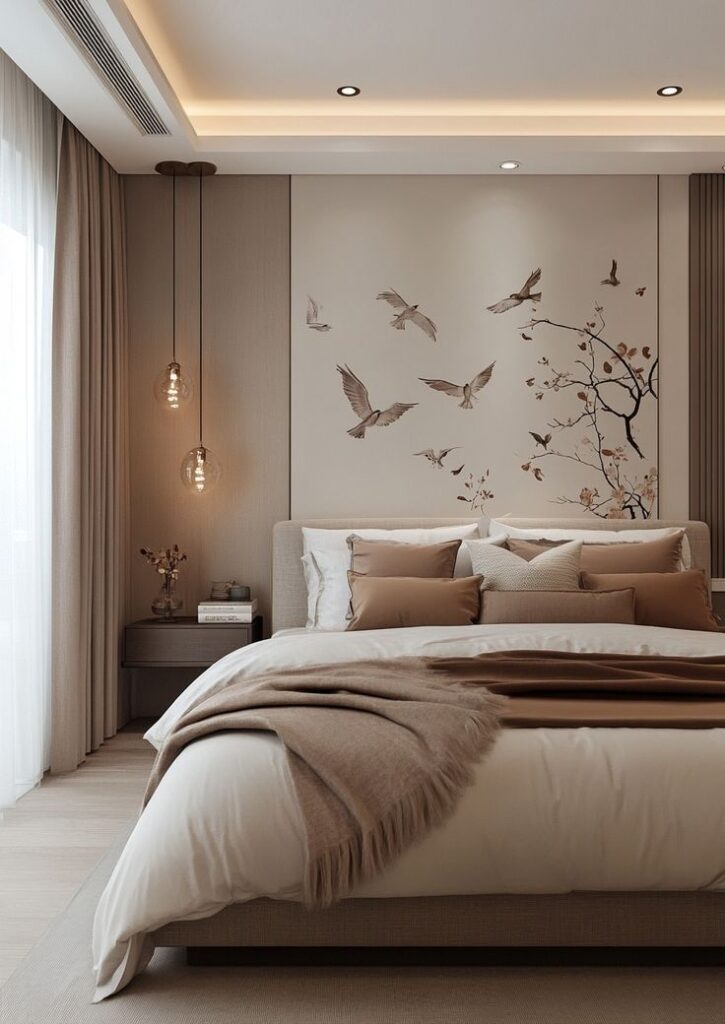When it comes to transforming the look and feel of a room, few things can match the impact of **wallpapering**. This age-old technique has made a significant comeback, offering a myriad of styles, patterns, and textures that can truly express one’s personality and taste. Whether you’re looking to create a cozy ambiance or a bold statement, wallpaper can do it all. But before you dive headfirst into this home improvement project, there are a few things to consider to ensure that your wallpapering endeavor is a success.
Understanding Wallpaper Types
The first step in your wallpapering journey is to familiarize yourself with the various types of wallpaper available. Each type has its unique attributes and applications. Here’s a brief overview:
- Paper Wallpaper: Traditional and versatile, paper wallpaper is easy to apply but may not be the best choice for high-moisture areas.
- Vinyl Wallpaper: Durable and water-resistant, vinyl wallpaper is perfect for kitchens and bathrooms. It’s also available in a wide range of designs.
- Textile Wallpaper: Made from fabric, this type offers a luxurious feel but requires more maintenance.
- Peel and Stick Wallpaper: Ideal for renters, this removable option allows for easy application and removal without damaging walls.
Choosing the Right Design
Once you’ve identified the type of wallpaper that suits your needs, the next step is to select a design that complements your overall decor. Consider the following tips:
- Assess Your Space: Large patterns can make a bold statement in spacious rooms, while smaller patterns can create a cozy feel in smaller spaces.
- Color Scheme: Choose colors that harmonize with your existing furniture and decor. Remember that lighter colors can make a room feel more spacious, while darker hues can add warmth.
- Texture: Experimenting with different textures can add depth and interest to your walls. Textured wallpaper can create a stunning visual effect.
Preparation is Key
Before you start wallpapering, proper preparation is essential. The success of your project largely depends on how well you prepare the walls. Here’s a step-by-step guide:
- Clean the Walls: Remove any dust, dirt, or grease from the walls to ensure that the adhesive sticks properly.
- Repair Imperfections: Fill in any holes or cracks with spackling paste and sand them down for a smooth finish.
- Prime the Walls: Applying a primer can help the wallpaper adhere better and prevent any issues with moisture.
Tools and Supplies Needed
Having the right tools and supplies on hand can make the wallpapering process much easier. Here’s a list of what you’ll need:
- Wallpaper (of your choice)
- Wallpaper adhesive
- Utility knife
- Wallpaper brush or smoother
- Measuring tape
- Level
- Seam roller
Applying Wallpaper Like a Pro
Now that you’re prepped and ready, it’s time to apply the wallpaper. Follow these steps for a professional-looking finish:
- Measure and Cut: Measure the height of your walls and cut the wallpaper accordingly, leaving an extra inch or two for adjustments.
- Apply Adhesive: Depending on the wallpaper type, apply the adhesive to the wall or the back of the wallpaper as directed.
- Hang the Wallpaper: Start from a corner and press the wallpaper onto the wall, smoothing it out as you go to prevent air bubbles.
- Trim Excess: Use your utility knife to trim away any excess wallpaper at the edges for a clean finish.
- Finish with a Seam Roller: Run a seam roller along the edges to ensure they are properly adhered.
Common Mistakes to Avoid
Even the most seasoned DIY enthusiasts can make mistakes. Here are some common pitfalls to watch out for:
- Ignoring Measurements: Always double-check your measurements before cutting to avoid wasting materials.
- Skipping the Primer: Failing to prime walls can lead to peeling wallpaper later on.
- Overlapping Seams: Ensure that seams are aligned properly to create a seamless look.
Frequently Asked Questions
How long does wallpaper last?
With proper care and maintenance, wallpaper can last anywhere from 5 to 15 years, depending on the quality and type.
Can I wallpaper over existing wallpaper?
While it’s possible to wallpaper over existing wallpaper, it’s generally not recommended as it may lead to bubbling and peeling over time. It’s best to remove the old wallpaper first.
What is the best way to clean wallpaper?
For vinyl wallpapers, a damp cloth with mild soapy water is usually sufficient. For other types, be sure to check the manufacturer’s cleaning recommendations.
Wrapping it Up
Taking the plunge into wallpapering can be an exciting adventure. With the right preparation, tools, and techniques, you can achieve stunning results that elevate your living space. So, gather your materials, channel your inner designer, and get ready to transform your home!






